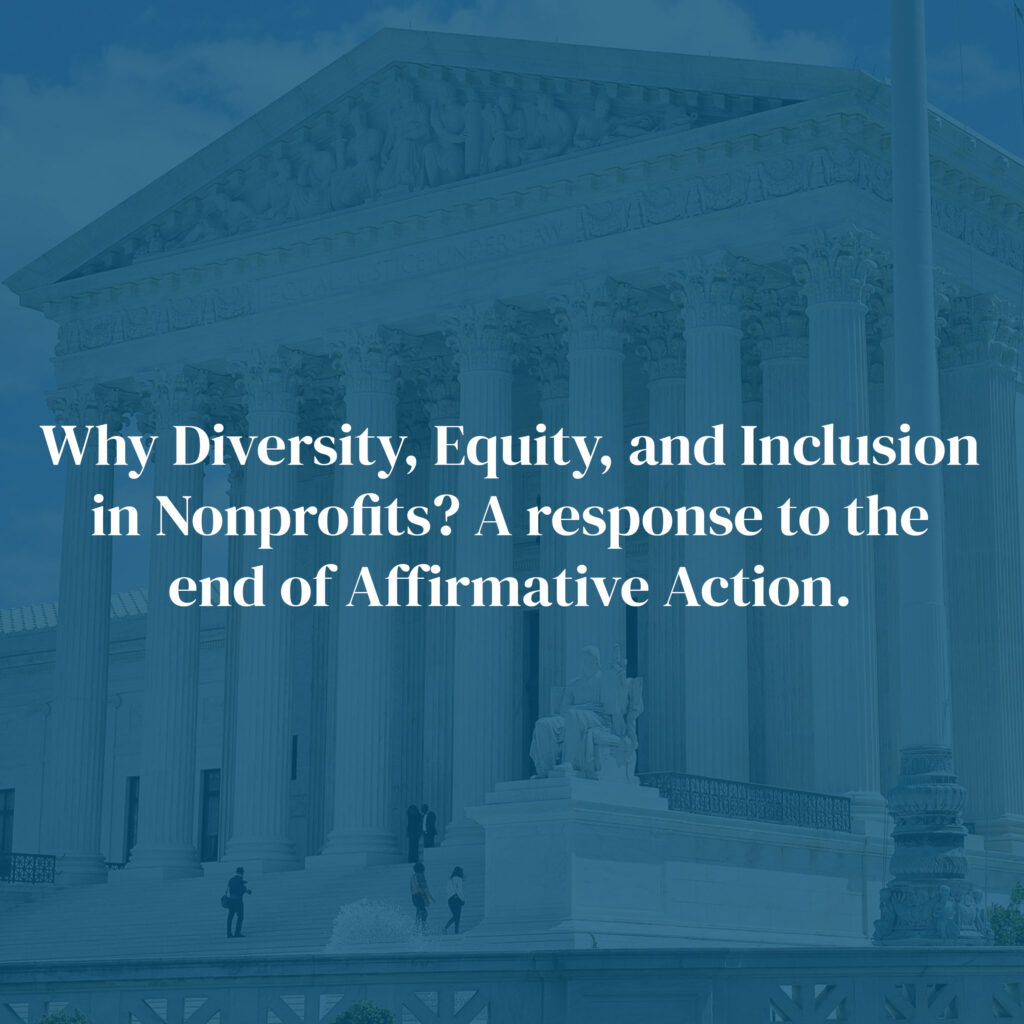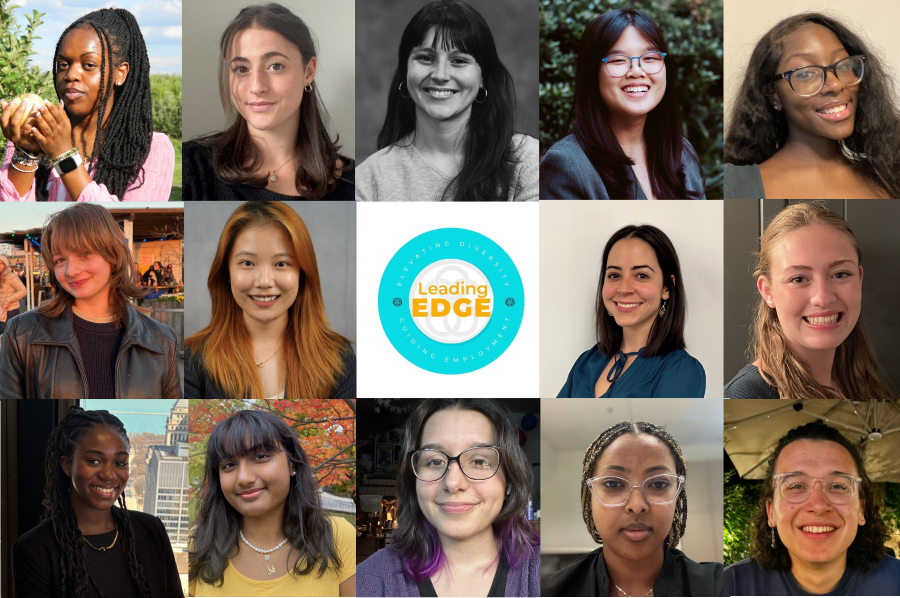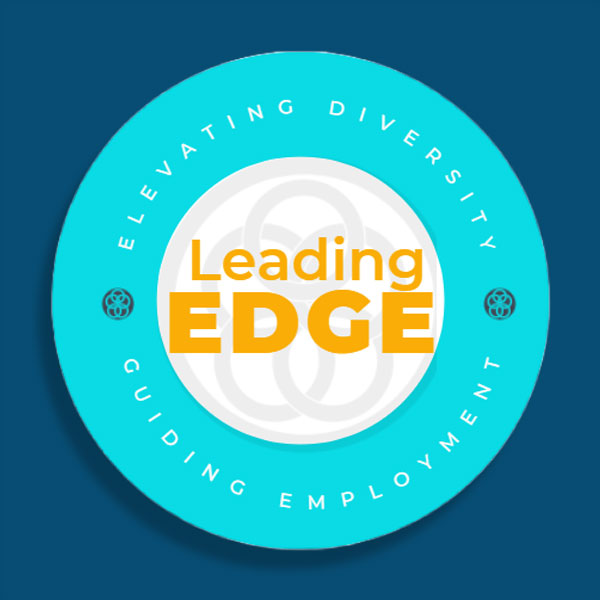Why Diversity, Equity, and Inclusion in Nonprofits? A response to the end of Affirmative Action

Why diversity? Why programs like TNPA’s Leading EDGE? Try asking it a different way: Why not? It’s a question many of us are asking after the Supreme Court’s decision to ban affirmative action in school admissions despite the conspicuous need for proactive efforts towards diversity, equity and inclusion in every aspect of our country’s educational institutions and workforce.
Why not when data shows the positive impact of concerted diversity efforts for both schools and employers?
In California, several universities remained committed to diversity efforts despite the drop in campus and workplace diversity numbers after the statewide repeal of affirmative action back in 1996 (Forbes). As shared by the University of California President Michael V. Drake,
“Without it, we must work much harder to identify and address the root causes of societal inequities that hinder diverse students in pursuing and achieving a higher education.”
Alicia Victoria Lozano, NBC News
As a result of their commitment, many of those same universities in California found other ways to reach students from underrepresented communities and diversify their student bodies.
Like such universities, a continuous commitment to diversity is greatly needed by nonprofit employers. From recruitment efforts in underrepresented communities to the internal work needed to promote equity and inclusion within their staffs, employers must continue to create opportunities for everyone to succeed. Even with what appears to be an uphill battle for many organizations, progress has already been made and the SCOTUS decision is not a reason — or an excuse — to stop.
Why not when the imbalance is so visible in organizations across almost every industry, including nonprofits?
Studies confirm the lack of diversity within the nonprofit sector, especially at the leadership level, and the effects it has on achieving an organization’s mission. One example: The most recent data gathered by Boardsource and shared by Atinuke Adediran, Associate Professor of Law, Fordham University, showing “6% of nonprofit board chairs identified as Black, 5% as Latino and 2% as Asian or Pacific Islander. Only 5% of nonprofit CEOs were Black, 3% Hispanic and 2% Asian or Pacific Islander” (The Conversation).
While results across various studies are mixed, many scholars agree, in general, that racial representation is necessary to serve the increasingly diverse communities that nonprofits and corporations serve. In addition to advancing an organization’s mission and enhancing its reputation (Journal of Public and Nonprofit Affairs), racial representation within our staffs and leadership is also needed to address the same inequities that prompted the creation of affirmative action in the first place.
“A policy like affirmative action is trying to correct some of the horrors of the past,” said Timothy Welbeck, associate professor of Africology and African American studies, civil rights attorney, and director for Temple University’s Center for Anti-Racism.
“It was never about taking unqualified Black applicants and supplanting them for qualified white applicants. It was about giving meaningful opportunity to those who had been denied in historic, systemic and structural ways and restoring some semblance of balance that had been denied from the very beginning.”
Maria Klecko, Temple Now
Why not when the benefits of diversity, equity, and inclusion are so vast and applicable to ALL of us in both nonprofit and for-profit?
From boosting employee retention and recruitment to increasing profit margins, enhancing innovation and pursuing our missions; everyone benefits from working with a diverse staff.
“Nonprofit organizations that implement DEI efforts will be sure to witness a radical shift in their own work culture—some of which include higher productivity amongst employees, an appreciation for diverse perspectives, and a form of unity that fights for solidarity and justice.”
Leo Pedraza, LinkedIn for Nonprofits
This is why we stand with all the universities, nonprofits, and companies who are committed to advancing employment opportunities for underrepresented groups.
The Nonprofit Alliance membership community must continue to work together to strengthen a nonprofit sector workforce, not for the benefit of a select few, but for the betterment of all. Here are a few suggestions for how to continue or start your own DEI efforts:
- Work with The Nonprofit Alliance and other organizations offering initiatives like our Leading EDGE Internship Program that connect employers to students from underrepresented and first-generation communities.
- Try a skill-based approach to hiring through Micro-internships and other methods more accessible to underrepresented groups.
- Seek out training and resources that help enhance your own DEI practices and initiatives.
- Promote resources like the Federal Public Service Loan Forgiveness (PSLF) Program to current and future employees to help combat the financial barriers to building a diverse workforce.
Contact Shelby Truxon, Vice President of Internship Experience, at struxon@tnpa.org for more ways to make an impact through Leading EDGE Sponsorship opportunities.



